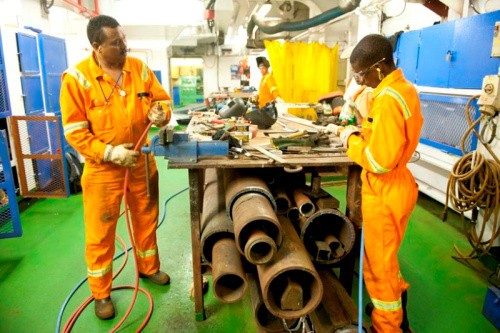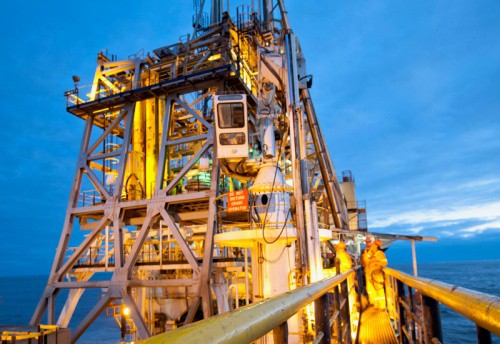Diamond mining vessels bring crew and heavy machinery into relatively close proximity. As part of its “zero harm” objectives for all personnel, De Beers Marine South Africa has installed a customised IoT solution to provide geofencing to maintain safe working distances for crew around the heavy machinery involved in marine diamond operations.
The company, which is a division of diamond giant De Beers, has successfully piloted the solution onboard the MV Mafuta, the world’s largest offshore diamond mining vessel operating 150km off the coast of Namibia in southern Africa. The vessel is owned and operated by Debmarine Namibia.
Debmarine Namibia, a joint venture between the government of the Republic of Namibia and De Beers Group, currently operates five diamond mining vessels and one exploration and sampling vessel – the mv SS Nujoma - off the southern coast of Namibia.
The mining vessels mine diamonds off the ocean floor using highly advanced drill technology, supported with sophisticated tracking, positioning and surveying equipment.
“Debmarine Namibia has a very clear aim of ‘zero harm’ across all our operations, and we are constantly looking at ways of enhancing employee safety and especially around the heavy machinery required for diamond recovery operations,” said Gerhardus Theron, vessel manager of the MV Mafuta said.

Orange Business Services has been tapped to work on the pilot project after an initial engagement and joint exploratory workshop with the technology vendor’s team in South Africa. The workshop was focused on IoT technologies such as Bluetooth Low Energy locators and wearable sensors, as a precision crew locator tool, integrated with onboard antennas and an Orange software engine.
“The initial engagement consultation and joint workshop with the team from Orange Business Services was very productive and quickly identified the potential for an IoT solution to ensure the wellbeing of personnel onboard the vessels. We quickly moved to a pilot phase, which has now confirmed the potential of this innovative approach that we could embed within our existing safety processes and procedures,” Theron recalled.
In the pilot, Orange Business Services imported the Mafuta’s AutoCAD files and undertook an onboard site survey to map antenna locations to geofence a predetermined area on the vessel. Ten crew members were equipped with wrist sensors. If one of the crew breached the geofenced area onboard the vessel, the ship’s bridge was alerted immediately.
“This smart IoT solution developed with De Beers is a great example of innovating and co-creating with our customer. The geofencing pilot has already proved successful in one of the most challenging heavy industrial environments - a floating diamond mine at sea, with prolonged exposure to strong vibration and corrosive saltwater,” said Keith Matthews, country manager for South Africa, Orange Business Services.
 “The next phase of its development will aim to refine the interface and data collection capabilities, and include testing a trigger function to deactivate machinery in the event of a breach of the geofence by a crew member,” Matthews, added.
“The next phase of its development will aim to refine the interface and data collection capabilities, and include testing a trigger function to deactivate machinery in the event of a breach of the geofence by a crew member,” Matthews, added.
De Beers Group Technology SA, an R&D arm of De Beers Group, is now further exploring additional applications, such as a breach alert function to link the sensors directly to the mining machinery via a SCADA (Supervisory Control and Data Acquisition) control system and PLCs (Programmable Logic Controllers), to facilitate a failsafe cut-off in the event of a breach in the geofence.
Meanwhile, the De Beers Group is the world’s leading diamond company with expertise in the exploration, mining and marketing of diamonds. Established in 1888, De Beers and its joint venture partners employ more than 20,000 people across the diamond pipeline. It is the world’s largest diamond producer by value, with mining operations in Botswana, Canada, Namibia and South Africa



